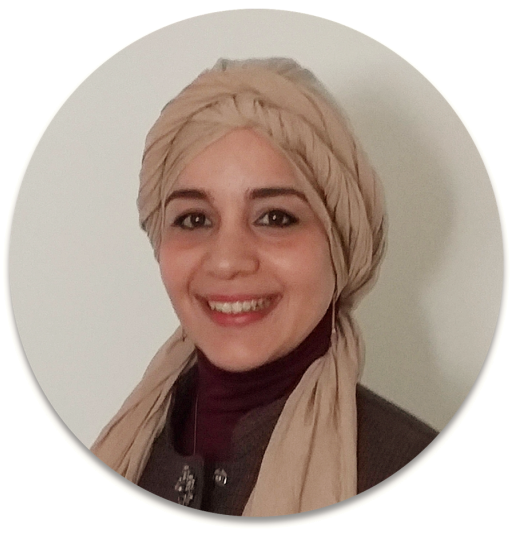Description & Relevance
Context
Big and complex data is fuelling diverse research directions in both medical image analysis and computer vision research fields. These can be divided into two main categories: (1) analytical methods, and (2) predictive methods. While analytical methods aim to efficiently analyse, represent and interpret data (static or longitudinal), predictive methods leverage the data currently available to predict observations at later time-points (i.e., forecasting the future) or predicting observations at earlier time-points (i.e., predicting the past for missing data completion). For instance, a method which only focuses on classifying patients with mild cognitive impairment (MCI) and patients with Alzheimer’s disease (AD) is an analytical method, while a method which predicts if a subject diagnosed with MCI will remain stable or convert to AD over time is a predictive method. Similar examples can be established for various neurodegenerative or neuropsychiatric disorders, degenerative arthritis or in cancer studies, in which the disease/disorder develops over time.
Why predictive intelligence?
It would constitute a stunning progress in the MICCAI research community if, in a few years, we contribute to engineering a ‘predictive intelligence’ which can map both low-dimensional and high-dimensional medical data onto the future with high precision. This workshop is the first endeavor to drive the field of ‘high-precision predictive medicine’, where late medical observations are predicted with high precision, while providing explanation via machine and deep learning, and statistically, mathematically- or physically-based models of healthy, disordered development and ageing. Despite the terrific progress that analytical methods have made in the last twenty years in medical image segmentation, registration or other related applications, efficient predictive intelligent models/methods are somewhat lagging behind. As such predictive intelligence develops and improves —and this is likely to do so exponentially in the coming years— this will have far-reaching consequences for the development of new treatment procedures and novel technologies. These predictive models will begin to shed light on one of the most complex healthcare and medical challenges we have ever encountered, and, in doing so, change our basic understanding of who we are.
What kind of research problems we aim to solve?
The main aim of PRIME-MICCAI is to propel the advent of predictive models in a broad sense, with application to medical data. Particularly, the workshop will admit 12-page papers describing new cutting-edge predictive models and methods that solve challenging problems in the medical field. We hope that PRIME workshop becomes a nest for high-precision predictive medicine, one that is set to transform multiple fields of healthcare technologies in unprecedented ways.
Topics of interests include but are not limited to predictive methods dedicated to the following topics:
- Modeling and predicting disease development or evolution from a limited number of observations;
- Computer-aided prognostic methods (e.g., for brain diseases, prostate cancer, cervical cancer, dementia, acute disease, neurodevelopmental disorders);
- Forecasting disease/cancer progression over time;
- Predicting low-dimensional data (e.g., behavioral scores, clinical outcome, age, gender);
- Predicting the evolution or development of high-dimensional data (e.g., shapes, graphs, images, patches, abstract features, learned features);
- Predicting high-resolution data from low-resolution data;
- Prediction methods using 2D, 2D+t, 3D, 3D+t, ND and ND+t data;
- Predicting image modality from a different modality (e.g., data synthesis);
- Predicting lesion evolution;
- Predicting missing data (e.g., data imputation or data completion problems).
- Predicting clinical outcome from medical data (genomic, imaging data, etc).
In-brief
This workshop will mediate ideas from both machine learning and mathematical/statistical/physical modeling research directions in the hope to provide a deeper understanding of the foundations of predictive intelligence developed for medicine, as well as to where we currently stand and what we aspire to achieve through this field. PRIME-MICCAI 2020 will feature a single-track workshop with keynote speakers with deep expertise in high-precision predictive medicine using machine learning and other modeling approaches —which are believed to stand at opposing directions. Our workshop will also include technical paper presentations, poster sessions, and demonstrations. Eventually, this will help steer a wide spectrum of MICCAI publications from being ‘only analytical’ to being ‘jointly analytical and predictive’.
Organizers
Keynote Speakers
Short bio: Julia Schnabel is Professor of Computational Imaging at the School of Biomedical Engineering and Imaging Sciences, King’s College London. She joined King’s in 2015 from the University of Oxford, where she was Professor of Engineering Science, and Fellow in Engineering at St. Hilda’s College, Oxford. Her research is focusing on machine/deep learning, nonlinear motion modelling, as well as multi-modality, dynamic and quantitative imaging for a wide range of medical imaging applications. She is the director of the EPSRC Centre for Doctoral Training in Smart Medical Imaging at King’s and Imperial College London which is training the next generation of imaging scientists. She is an Associate Editor of IEEE Transactions on Medical Imaging, Transactions on Biomedical Engineering, and on the Editorial Board of Medical Image Analysis. She is a Director of the Medical Imaging Summer School (MISS) and has been Program Chair of the International Conference on Medical image Computing and Computer Assisted Intervention (MICCAI) in 2018. She has been General Chair of the international Workshop on Biomedical Image Registration (WBIR) held in conjunction with the Computer Vision and Pattern Recognition (CVPR) conference in 2016, and will be a General Chair of the Information Processing in Medical Imaging (IPMI) conference in 2021. In 2018, she was elected Fellow of the MICCAI Society, and in 2019 Fellow of the European Laboratory for Learning and Intelligent Systems (ELLIS).
Short bio: Nassir Navab is a full Professor and Director of the Laboratory for Computer Aided Medical Procedures, Technical University of Munich and Johns Hopkins University. He has also secondary faculty appointments at both affiliated Medical Schools. He completed his PhD at INRIA and University of Paris XI, France, and enjoyed two years of post-doctoral fellowship at MIT Media Laboratory before joining Siemens Corporate Research (SCR) in 1994. At SCR, he was a distinguished member and received the Siemens Inventor of the Year Award in 2001. He received the SMIT Society Technology award in 2010 for introduction of Camera Augmented Mobile C-arm and Freehand SPECT technologies, and the ‘10 years lasting impact award’ of IEEE ISMAR in 2015. In 2012, he was elected as a Fellow of the MICCAI Society. He has acted as a member of the board of directors of the MICCAI Society, 2007-2012 and 2014-2017, and serves on the Steering committee of the IEEE Symposium on Mixed and Augmented Reality (ISMAR) and Information Processing in Computer Assisted Interventions (IPCAI). He is the author of hundreds of peer reviewed scientific papers, with more than 35160 citations and an h-index of 87 as of September 29, 2020. He is author of more than thirty awarded papers including 11 at MICCAI, 5 at IPCAI and three at IEEE ISMAR. He is the inventor of 50 granted US patents and more than 50 International ones. His current research interests include medical augmented reality, computer-aided surgery, medical robotics, and machine learning, for more information see https://www.medicalaugmentedreality.org/ and http://campar.in.tum.de/WebHome).
Short bio: Pew-Thian Yap is currently an Associate Professor of radiology with The University of North Carolina at Chapel Hill, Chapel Hill, NC, USA. He is also a Faculty Member of the Biomedical Research Imaging Center. His research interest lies in diffusion MRI and its application to the characterization of brain white matter connectivity. He has published over 190 peer-reviewed papers in major international journals and conference proceedings. He is a Senior Member of the IEEE.
Program Committee Members
Alaa Bessadok, University of Sousse, Tunisia
Amir Alansary, Imperial College London, UK
Baiying Lei, Shenzhen university, China
Benjamin S. Aribisala, Lagos State University, Nigeria
Changqing Zhang, Tianjin University, China
Dong Hye Ye, Marquette University, USA
Duygu Sarikaya, Univ-Rennes1, France
Febrian Rachmadi, RIKEN, Japan
Heung-Il Suk , Korea University, Korea
Ilwoo Lyu, Vanderbilt University, USA
Jaeil Kim, Kyungpook National University (KNU), Korea
Jon Krause, Google, USA
Lichi Zhang, Shanghai Jiao Tong University, China
Manhua Liu, Shanghai Jiao Tong University, China
Mayssa Soussia, University of North Carolina at Chapel Hill, USA
Minjeong Kim, University of North Carolina at Greensboro, USA
Pew-Thian Yap, University of North Carolina (UNC), USA
Qian Wang, Shanghai Jiao Tong University, China
Qingyu Zhao, Stanford University, USA
Seung Yeon Shin, National Institutes of Health, USA
Seyed Mostafa Kia, Donders Institute, Netherlands
Ulas Bagci, University of Central Florida (UCF), USA
Victor Gonzalez, Universidad de León, Spain
Xiaohuan Cao, United Imaging Intelligence, China
Yu Zhang, Stanford University, USA
Yue Gao, Tsinghua University, China
Ziga Spiclin, University of Ljubljana, Slovenia
Submission
The number of pages can range between 8 and 12 pages including references. Papers should be formatted in Springer LNCS style. PRIME reviewing is double-blind.
For paper submission, please use the following link: https://cmt3.research.microsoft.com/PRIME2020
To download PRIME flyer, click here.
Key dates:
Full Paper Deadline: June 30, 2020; 11:59 PM PST, extended to July 6, 11:59 PM PST
Notification of Acceptance: July 21, 2020
Camera-ready Version: July 31, 2020, 11:59 PM PST
Workshop date: Oct 8, 2020
Submission instructions:
Papers should be submitted electronically following the guidelines for authors and LaTeX and MS Word templates available at Lecture Notes in Computer Science, double blind review). Manuscripts should be up to 12 pages and submitted via the PRIME submission website. No modifications to the templates are permitted. Failure to abide by the formatting guidelines will result in immediate rejection of the paper. The papers will be evaluated by three external reviewers or potential inclusion in the scientific program of PRIME-MICCAI.
SPECIAL PRIME 2020: Talented minority scholarship to register accepted PRIME papers by students in low research and development countries
-We offer scholarships supported by BASIRA Lab to register accepted PRIME papers if the first author is a student at a University in a low R&D country. If the rank of your country is larger or equal to 50 based on expenditure on R&D sorted in decreasing order, then you are eligible:
https://en.wikipedia.org/wiki/List_of_countries_by_research_and_development_spending
Instructions for submitting your camera-ready paper:
Please make sure to upload a zip file including the following documents:
1. The final camera-ready PDF of your paper.
2. All original files required to generate the final PDF. If you are using Latex, please make sure to include .tex, .bib, figures, and any other files for compiling the tex file. If you are using Word, please upload the docx file.
3. Please fill out the Springer copyright form which can be found using this link: https://basira-lab.com/prime2020-lncs-copyright-form/
Please make sure that the copyright forms have been filled out correctly before uploading the zip file.
The paper length can vary between 8 and 12 pages.
Finally, please upload only one zip (not rar) file with everything included (using your paper submission ID, for example: PRIME20-32.zip, where 32 is your paper ID number).
PRIME-MICCAI 2020 proceedings will be published in Springer’s LNCS (Lecture Notes in Computer Science), www.springer.com/lncs.
Many thanks.
Program
To access the tentative program for PRIME-MICCAI 2020, please click on: PRIME MICCAI 2020 Program







